Interviews with experts and opinion leaders from our research network
One of the challenges Japan faces today is to determine how to formulate a viable growth strategy through the implementation of various structural reforms including negotiating the Trans-Pacific Strategic Economic Partnership Agreement (TPP), creating new industries, and putting in place measures to deal with the country’ s decreasing birthrate and aging population. What, then, should government and the business world do in the future to work towards this end ? In this interview, we speak with Mr. Kazumasa Iwata, President of the Japan Center for Economic Research, about the potential growth of the Japanese economy from a long-term perspective.
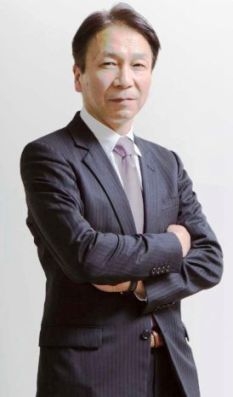
President, Japan Center for Economic Research. Received numerous prizes including the Economist Prize in 1981 for his book “Banks’ Behavior and Monetary Policy” and the Minister of Posts and Telecommunications Prize in 1994.
Career Summary.
Mar. 1970 Graduated from The University of Tokyo’s Department of Regional Studies
in the College of Arts and Sciences
Apr. 1970 After taking up a position at the Economic Planning Agency of the Japanese Government,
became SeniorEconomist at the Economic Research Institute in 1985
Oct. 1986 Associate Professor, College of Arts and Sciences, TheUniversity of Tokyo (Economics)
Apr. 1991 Professor, College of Arts and Sciences, The University of Tokyo (Economics)
Apr. 1996 Professor, Graduate School of Arts and Sciences, The University of Tokyo (Economics)
Apr. 1999 Professor, Graduate School of Arts and Sciences, The University of Tokyo
(Department of Advanced Social and International Studies, Full-time Chairperson)
Jan. 2001 Director-General for Policy Analysis, Cabinet Office
Mar. 2003 Deputy Governor, Bank of Japan
Jun. 2008 President, Economic and Social Research Institute, Cabinet Office
Oct. 2010 President, Japan Center for Economic Research
Kawamura: Over the course of your career, you have held various posts both in Japan and overseas including that of university professor, Deputy Governor of the Bank of Japan, and the President of the Economic and Social Research Institute in the Cabinet Office. And you are currently serving as President of the Japan Center for Economic Research. First of all, please tell us why you decided to specialize in economics.
Iwata: Economic affluence depends on how happy people can ultimately become. Although there are various methods for achieving happiness, in simple terms, there are two ways. One is to seek spiritual happiness rather than material affluence like a hermit living in the mountains. The other is to enrich the way we live to enable us to live in comfort. When we consider the various roles we as individuals play in society, it becomes quite clear that economic society would not function well if we all chose to become hermits living in the mountains. In that sense, I began to think that I would like to specialize in the study of economics as a means of enriching people’s lives.
I graduated from university right at the time the University of Tokyo was having serious problems with dissension on campus. Instead of going on to graduate school, I felt I wanted to engage in work that involved the socioeconomic analysis of Japan and be able to learn more about economics, so I joined the Japanese gove rnment’s Economic Planning Agency. I subsequently took up a position at the University of Tokyo and taught economics in the Department of Arts and Science, College of Arts and Science. In 2001, when the Economic Planning Agency was reorganized in to the Cabinet Office , I was appointed Director-General for Policy Analysis of the Cabinet Office, where I was in charge of economic assessment and policy analysis. I then went on to serve as the Deputy Governor of the Bank of Japan and President of the Cabinet Office’ s Economic and Social Research Institute; now I am currently working for the Japan Center for Economic Research (JCER). When I first graduated from university, I had no idea that I would change workplaces as many as six times. In the past, it was the norm for a person who became a government official to remain in some government office until the end of his career. Somehow I feel I took up my positions at the very time Japan was undergoing a transformation, a time during which Japan’ s economic society was changing significantly.
Kawamura: The business performance of Japanese companies is recovering. For Hitachi too, the operating income for fiscal 2013 is forecast to reach a record-breaking high. There are visible signs that Japan is overcoming deflation, but do you believe that this can actually be achieved by 2015?
Iwata: With the inauguration of his new government in November 2013, Prime Minister Abe launched what we now cal l Abenomics based on a three-pronged approach: monetary expansion, fiscal stimulus, and growth strategy. For the third action, the growth strategy, he set a target to raise the real rate of growth to 2% over the medium term. However, there are slight reservations about this in terms of the market consensus. The Japan Center for Economic Research, where I work, forecasts the real rate of growth from fiscal 2013 to fiscal 2015 to be on average about 1.3%. A significant factor affecting growth is the raising of the consumption tax rate this year and next year, on two occasions, for a total of 5%. Governor Kuroda of the Bank of Japan held a news conference in April 2014 and announced that the deflationary gap was close to 0%. According to government announcements, however, deflation still exists at around the 1.6% mark, and the Brookings Institution in the United States estimates it to be higher than 1.6%. I too am of the belief that the deflationary gap still exists. In normal times, the costof living generally rises once the deflationary gap is closed, and demand s l ight ly surpas ses supply. According to the government’ s announcement, certainly the price index has recently risen by 1.3%. The question, however, is why the prices rose 1.3%, and I believe that this is primarily due to the impact of the weak yen. Since the start of the Abe administration, the yen has fallen 20 to 25%, and therefore, I believe companies have made considerable foreign exchange profit. In fact, there may be many export companies that recorded the highest profit in their history. The e ff e c t s of a weak yen, howeve r, are a one -off phenomenon and will not last. If the yen were not tobe further weakened, half of the rate of increase of prices would be lost. In other words, even though the increase in prices at the moment is 1.3%, it could end up at around 0.6% by the end of the year.
Kawamura: To summarize what you are saying, then, are you of the opinion that we will not be able to shake off deflation even in 2015?
Iwata: If we take into account the two hikes in consumption tax, I believe we are looking at a period of five years to shake off deflation. The “Inflation Outlook of Enterprises” in the Bank of Japan’ s Tankan (quarterly short-term economic survey of principal enterprises) surveys how companies view future trends in prices and announces its findings. According to the recent announcement, the increase in consumer prices was about 1.7%. However, in regard to sales prices f ive year s f rom now, while large corporations forecast growth to be negative 0.3%, small to medium-sized companies forecast more than 2%, showing a significant difference in responses. We doknow that large firms forecast that the price of goods and services they are selling will not increase in the future. Based on these indications, we can perhaps say that we are only halfway from pulling out of deflation. On the other hand, there is an opinion that if the rate of increase in prices at present is 1.3%, the government probably should declare that we have come out of deflation. On the other hand, if we adhere to the three points that the Cabinet Office lists as the criteria for ove rcoming de f lat ion – (1) re solut ion of the deflationary gap in GDP, (2) increase in the GDP deflator, and (3) increase in unit labor costs – we are not yet in a position to say we have over come deflation. Up until now – one year since the start of Abenomics – prices have been moving roughly as expected, but I believe there will be various difficulties in the future.
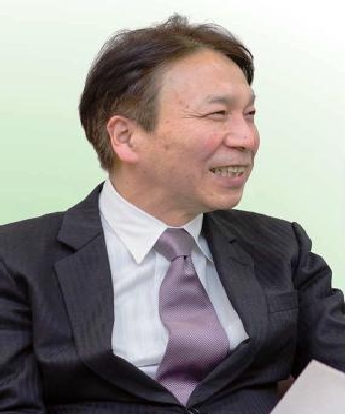
Kawamura: To demonstrate the full potential of the Japanese economy, I believe policy needs to incorporate reforms in the industrial structure and the mapping out of a growth strategy. What are your thoughts on regulatory reforms and the development of new industries? In addition, how do you view the effects of free trade agreements?
Iwata: I believe the growth strategy has two pillars. The first is structural reform, such as reforms in institutions and deregulation, and the second is the promotion of innovation.
First of all, in terms of institutional reforms, I believe a key element will be the TPP, which is currently being discussed quite vigorously. The realization of a mega free-trade agreement (FTA) like a TPP for Japanese companies would not only eliminate barriers associated with trading but also would facilitate the establishment of global value chains, which is very important. Japan is involved in four mega-size FTAs: TPP, RCEP (Regional Comprehensive Economic Partnership), Japan-EU EPA (Economic Partnership), and APEC (Asia-Pacific Economic Cooperation) apart from the TTIP (Trans atlantic Trade and Investment Partnership), and it could be said we are right in the
middle of a “Mega-size FTA era.”
It has been estimated that if we removed barriers associated with customs clearance and logistics infrastructure in every country to facilitate the establishment of global value chains, the global economy would benefit by 2.6 trillion dollars. This is a figure based on a tentative calculation prepared jointly by the World Economic Forum in Davos and the World Bank. The economic effect of abolishing all tariffs in the world is estimated at 0.4 trillion dollars and, therefore, this would be six times that. I believe the Japanese economy would also be able to derive significant benefits from this and, therefore, I believe achieving success in TPP negotiations is extremely important for Japan.
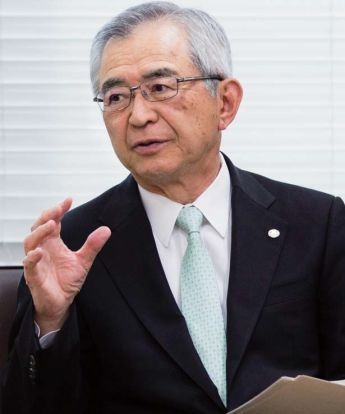
Kawamura: On the point of promoting innovation, how do you envisage new industries where future growth can be expected?
Iwata: In May 2013, McKinsey Global Institute published a report entitled “Disruptive technologies: Advances that will transform life, business, and the global economy,” and this report was well received. It cited 12 technologies that would reform people’s lives or economic activities from the very foundation by the year 2025. For example, this includes next-generation robots and technologies for analyzing vast amounts of
genetic data. The report suggests that these 12 technologies deeply related with information technology will bring about significant changes in society.
Meanwhile, I read a very interesting book recently called, “The Second Machine Age.” This book describes the industrial revolution from the era of steam engine locomotives, which began in the latter half of the 18th century, to the introduction of electricity as the “First Machine Age.” The notable characteristic of this age is the replacement of human physical labor with machines. At the same time, it describes the era at present as the threshold of a new age, “the Second Machine Age,” where machines replace human brainwork. I believe the technologies which are converging in this flow are the very 12 technologies in the report I mentioned a moment ago.
Kawamura: As we enter the new era of the Second Machine Age, I imagine the industrial structure will change too, won’t it?
Iwata: I believe it is important to develop industries that will create new added value by moving away from the categories of general manufacturing and service businesses and, shall I say, transitioning to an industrial structure befitting the Second Machine Age. In the field of information technology, the United States is still maintaining relative predominance. The Japan Center for Economic Research forecasts, “As of 2050, the United States will maintain the position as the world’ s No. 1 economic power.” The reason we make this claim is that the US economy is equipped with mechanisms for further developing the most advanced information technology through favorable cycles of industry-academia collaboration.
Kawamura: I have exactly the same impression when I look at the examples of Amazon and Google. On the other hand, I also believe Japanese companies have outstanding deve lopment expe r t i s e in conve rg ing soc i a l
infrastructure with information technology.
Iwata: Japan certainly does have sufficient potential, and I do not believe Japan necessarily compares unfavorably to the United States in terms of standards in science and technology. In fact, US companies have been known to build business models that skillfully make use of Japanese technologies. In Japan too, if companies are able to skillfully construct systems for linking their elemental technologies to business, the future will be bright.
Kawamura: I agree with you. This is true especially for Hitachi, since the company has both information technology and social infrastructure. Take, for example, the railway business, where the company is trying to apply
Big Data technology not only to railway vehicles but also to the control of operations. I believe there are a lot of areas where we can demonstrate our strengths.
Iwata: The Japanese government has been advocating Japan’s role as an “IT nation” since the beginning of 2000 and has implemented all kinds of measures, but it has not been achieving the desired results. For example, when it comes to Japan’ s financial data, definitive figures become available at the local municipality level only after two years. An “IT nation” suggests that data such as how much is spent by what town can be centrally determined in real time. While the introduction of IT by local municipalities is currently underway, there are still many cases where full utilization is not possible due to connectivity issues.
In IT areas, I believe Japan is strong in hardware including components and parts. However, I also believe it is still very weak in the area of software, which is considered “knowledge capital” for creating networks and databases, and effectively using these in business strategies. The Organization for Economic Co-operation and Development (OECD) released data showing international comparisons of the ratios of intangibles and tangibles. According to this data, while the ratio of hard investment (capital stock) to soft investment (knowledge capital) is 1:2 in the United States, the same ratio in Japan is the reverse. “The Second Machine Age,” the book I mentioned earlier, introduced a demonstration analysis showing that when IT investment in the United States injects $1 into hardware, it injects $9 into software including training and business reforms. This means that the money is securely spent where hardware is actively utilized. In that respect, Japan is weak and, therefore, I believe the industry is incapable of sufficiently reaping the merits of information technology.
Kawamura: Certainly, there must still be many industries, including agriculture, with the potential for reaping the merits of information technology.
Iwata: Of course. Network formation in areas such as sales and creating brand image, etc. all relate to information technology.
Kawamura: I believe Japan should develop new industries that are integrated with information technology. However, since many of the manufacturing businesses have moved offshore, it is getting difficult to maintain employment at the same level as in the past in Japan.
Iwata: That is the most sensitive issue. In “The Second Machine Age,” machines replace everything from physical labor to brainwork. When this occurs, it raises the question as to what human beings should do.
Kawamura: I believe that it may be possible to keep some industries in Japan to a certain extent, such as the development and manufacturing of components, which play a core role in products. As evident in the number of Nobel Prize recipients, I believe the fundamental level of Japanese research is notably high in Asia. Although there are some Chinese recipients of the Nobel Prize, they are all researchers actively pursuing their work in the United States, and no researchers in China have yet received the Nobel Prize.
Iwata: Certainly there has been a significant increase in the number of patents in China. In reality, however, the majority of the applicants are foreign companies including US companies
Kawamura: It is essential for us to train people who will assume l eading rol e s in deve loping and ut i l i z ing new technologies with global competitiveness in the future. What are your thoughts on reforms in university education for achieving this? In Europe and the United States at present, proactive collaborations are taking place between universities and industries. What kind of measures do you think government and the corporate
world need to implement to promote industry-academia collaborations that are highly effective in Japan?
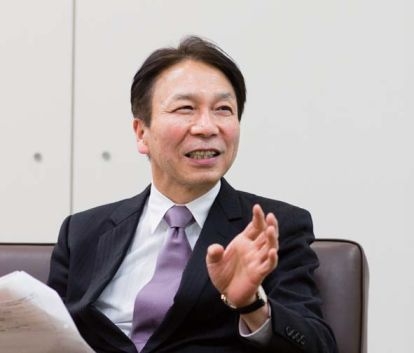
Iwata: Of course, like Hitachi, there already are many companies in Japan that possess various information technologies, and there are many cases where large firms devote ongoing efforts to spearheading new technologies to develop new industries. At the same time, in the United States, venture companies like Google are being created one after another on university campuses and in Silicon Valley, and these companies are going on to develop into large companies on par with Toyota in the blink of an eye. A comparison of venture companies that began on universities in Japan and the United States shows that a significant difference exists between the two. This difference is also evident in the number of patent applications. In comparison with 12,000 applications filed in the United States annually, Japan has only half that at 6,500. On the other hand, the scale of the United States’ economy is about three-fold that of Japan.
In view of this factor, it can be said that the standard of Japanese science and technology compares favorably with that of the United States. However, while about 1,800 of these 12,000 applications went on to become commercially viable in the United States, only 31 out of the 6,500 in Japan did. During the era when Japan was trying to catch up with the United States, it may have been good enough to compete on the level of technology alone. But if Japan is to become a trendsetter, I believe it will have to incorporate its research results into business models that it can take to the market. I believe that there is something missing in this process in Japan at present.
Kawamura: Does this mean that industry-academia collaborations are not functioning well in Japan?
Iwata: It is true that there are many cases of stagnant industry-academia collaborations. We need some breakthroughs in this area. In the words of Joseph Schumpeter, new combinations bring innovation. Inventions, of course, are important but we need to combine these with production, sales, and, in some cases, even financing perhaps. In terms of financing, funds necessary for university-initiated ventures in Japan are not flowing well. For example, venture capital in Japan is only about one-twentieth of that of the United States. I believe that by skillfully combining the necessary elements I spoke about earlier, we may begin to see “disruptive technologies” flourishing in Japan too.
Kawamura: Then, what do you think Japan should do to aim for long-term economic growth and to maintain the level of its potential growth?
Iwata: There are three factors that determine the potential growth rate: injection of labor, injection of capital, and the productivity of the economy as a whole. If we look at these individually, in terms of labor, the growth rate of the labor population in Japan is negative. In terms of capital stock too, the growth rate of net capital stock excluding depreciation is negative. This leaves productivity of the economy as a whole as the sole element that can bring potential growth to a positive level. This overall productivity of the economy is known as the “total factor in productivity.
” The current Abenomics aims to raise this total factor in productivity by 2%. According to tentative calculations by the Japan Center for Economic Research, the growth rate of the total factor in productivity right now is about 0.7%. In some cases, because labor and capital are making a negative contribution, unless the total factor in productivity is lifted to a level of at least about 2.5%, medium-term growth cannot be achieved. However, I believe it is difficult to increase the current rate of the total factor in productivity by three- or four-fold. In its “Vision 2050 Long-term World Forecast – Three Future Scenarios for Japan” released in February this year, the Japan Center for Economic Research examines several long-term growth scenarios for Japan’ s economy in the lead up to 2050.
For example, in the scenario where Japan continues its efforts at institution reforms following the same speed as in the past, the average growth rate will be about 0.2% (standard scenario). In contrast, in the scenario where Japan implements various institutional reforms and innovations wholeheartedly, it forecasts a growth rate of 1.4% (growth scenario). In other words, the center believes that increasing the growth rate is possible. While this scenario looks at the country as a whole, if we look at growth on a per capita basis, bearing in mind that the population is contracting, the growth rate would be a little under 2%. Therefore, economic growth at that level is not impossible.
Kawamura: The “Committee for Japan’ s Future,” of which you are a member, announced a plan to come up with a policy for increasing the birthrate from around 2030. If we are able to maintain economic growth up until that time, the number of childbearing women will increase and there is a possibility that the birthrate may increase.
Iwata: Analyses of various child-rearing measures implemented by OECD countries clearly indicate birthrates can be increased through policies. For example, France developed a groundbreaking support policy for child rearing, and brought the birthrate back to close to two children over about 30 years. According to tentative calculations for a long-term forecast for 2050 by the Japan Center for Economic Research, which I mentioned earlier, an annual budget of 8 trillion yen in cash benefits and child care support will be needed for Japan to implement the same policy. This amount of 8 trillion yen is exactly equivalent to the amount of increased revenue generated by the 3%increase in consumption tax. By implementing such measures, we can increase the current birthrate in Japan from 1.4% to 1.8%. To raise it as high as 2.1%, however, will require a budget of 16 trillion yen. However, the level of 8 trillion yen may be the limit in terms of budget. Even with such efforts, the decline in population is set to continue, and we will need to increase the number of foreign workers in Japan. At present, Japan accepts about 50,000 working people every year.
If we could raise this to a level of 200,000 by 2050, the country’s population would stabilize at 90 million people. Although this is a considerable decline from the current population of 125 million people, it is possible to apply the brakes to the ongoing decline. While 200,000 may seem to be a significant number of people, when I was speaking with someone from an Australian think-tank and mentioned the possibility of increasing the number of foreign workers to 200,000 in Japan, this person told me that while Australia is a much smal ler count ry than Japan in terms of population, it has accepted 300,000 people. I also heard that concentrating on certain work types or skill levels resulted in oversupply and, therefore, Australia accepts a wide range of human resources. Another effective way, I believe, is accepting more foreign students. Due to the ongoing decline in the birthrate, it is forecast that the number of students entering universities will decrease by 100,000 as of 2050, but increasing the number of foreign students could also offset this by 100,000.
By studying atJapanese universities, students will improve their Japanese, and if half or about 30% of these express a desire to work in Japan after graduation, this would also act as an effective measure in maintaining Japan’ s economic growth. The decline in population is an important issue that must be tackled in order to promote the growth of the Japanese economy, and I believe that it is important to understand that it is possible to put the brakes on the ongoing decline.
Kawamura: So are you saying that, to realize the growth scenario, we need to make all-out efforts in many different ways?
Iwata: Not only as a country and a government, but also as private companies and as individuals. We all have to seriously consider the future of Japan and take action in our respective capacities.
Kawamura: I have never thought about this issue in terms of creating an ambitious slogan based on the aspiration to “Maintain Japan’s population at 90 million.”
Iwata: Certainly, there has been no such precedent throughout Japan’ s postwar period. However, since it became clear that the population will decline by 30 to 40% in the future, it is necessary for Japan to unite as one to tackle this issue. I fear that Japan will lose its current status as a first-tier nation if the working population contracts and the Japanese economy shrinks due to the aging of the population.
Kawamura: I believe financial reform is important for achieving sustainable growth in Japan. The 2050 long-term forecast released by the Japan Center for Economic Research stresses the need to raise the consumption tax in stages and the need to increase the national burden rate in line with this. To realize financial reform in Japan, what level of increase in the national burden rate and how much time should we be looking at?
Iwata: At present, the national burden rate for tax and social security are 37%, but the 2050 long-term forecast by the Japan Center for Economic Research predicts that this will go up to 55 to 58%. The burden on social security in particular is increasing. Unless we increase tax revenues, the debt level will increase and the country will become fiscally insolvent. The current government debt stands at 230% of GDP. At the moment, the long-term interest rate is between 0.6 and 0.7%, but even if this rose by 1%, interest payments would increase by 2.3% in proportion to gross national product.
In monetary terms, the cost of interest payments would all at once increase in units of 10 trillion yen. Suppose, for example, that the Bank of Japan achieved its price stability target of 2%, the long-term interest rate would probably rise to 3%, and thi s alone would rai se interes t payment s by a tremendous amount. Naturally, if we apply no taxes and fail to take measures, the budget deficit and the government debt will expand, and things will end up in an unworkable situation. Unless the consumption tax rate is raised to 25%, government debt and its ratio to GDP will become unstable. When I was interviewing OECD Secretary-General Angel Gurria the other day, he commented that what Japan ne eded to do now was to increase the consumption tax rate to at least 15%. The IMF holds the same opinion. At the same time, the Japan Center for Economic Research believes stabilizing Japan’s economy in e a rne s t wi l l r equi reraising the consumption tax rate to 25%. While the overall rate of the tax burden would rise to about 55%, it is about 60% in Sweden, and Japan too will have to approach that level.
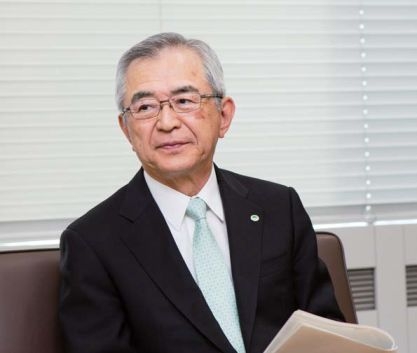
Kawamura: Although the tax burden is high , people in Scandinavian countries seem to realize that they are receiving appropr iate compensat ion f rom the government, which counterbalances the high tax rate.
Iwata: I believe that is the reason why it is functioning well. These governments are properly demonstrating their accountability to the people, and the people in turn are giving their consent to heavy taxes. I do not believe Japan has come that far yet. People would simply see increasing taxes as a means of taking their money away from them.
Kawamura: On your point about “consumption tax at 25% and the national burden rate at 55%,” when do you envision this happening?
Iwata: We have done trial calculations which indicate that unless we meet those conditions by the beginning of the 2030s, it will be too late. Therefore, we do not have much time left.
Kawamura: I would now like to turn the focus of our conversation to the world economy. Do you believe the recovery of the US economy is genuine? And could you also share your view on the possibilities for sustainable growth of the Chinese economy?
Iwata: As far as the US e conomy goe s, one notabl e development that can be cited is reform in the energy industry. As a result of the so-called “shale gas revolution,” it is said that the United States is set to become an oil producing country that will surpass Saudi Arabia in oil production by around 2020. It is clear that the economy will be invigorated. Working in tandem with the energy industry, the petrochemical industry is also on the way to recovery. This area of energy is listed as one of the 12 technologies in the “disruptive technologies” I spoke about before, and venture companies are currently playing an active role in drilling for shale gas.
In addition, the trend of the weak US dollar has also continued since 2002, and US global competitiveness has recovered significantly. The cost of production in the United States is no longer expensive and there is a trend toward “returning manufacturing to the US mainland.” Therefore, the US economy may become very strong again. Moreover, I believe the United States will also have considerable competitiveness in the Second Machine Age. Taking these factors into account, I believe that the US economy led by the private sector will become considerably stronger in the future. However, the real growth rate in the United States has remained at about 2 to 2.5%, and it does not appear that strong. Typically, in a recovery period after a recession, growth is normally 4 to 5%, but in this case growth is only half that in numerical terms. However, as the author of “The Second Machine Age” points out, there is some doubt as to whether current statistical methods of measuring GDP are really evaluating newly created industries in the Second Machine Age.
At present, we can acquire all kinds of information using the Internet. Users can input and output at the same time. New products and software are being created at a rapid pace, so I too have my doubts as to whether all such activities are adequately incorporated into economic data. In the latter half of the 1980s, 4% of the US GDP was attributed to the information industry. Naturally, it would not be strange for this ratio to increase several times over by now, but it still remains the same statistically. In view of this factor, the US economy may have developed somewhat more in reality.
Kawamura: Isn’ t it a fact that while economic growth in the United States is progressing steadily, politics in that country are frustrating its progress?
Iwata: Of course, that is also one factor. At this stage, however, both the Democ rat i c Par ty and the Republican Party have agreed on the budget bill for the time being, and I believe the forecast for reduction in the fiscal deficit has improved significantly from what it was before. On the other hand, while the private economy in the United States is clearly improving, the GDP for the nation as a whole does not project a picture of a very strong economy. Furthermore, f i scal policy is becoming a significant factor sur rounding theuncertainty of the future US economy. It is fine to introduce quantitative easing to stimulate the economy, but quantitative easing will clearly have an impact on asset value. In Japan’ s case, share prices rose by around 50% due to quantitative easing and the exchange rate decreased by about 20%, resulting in a significant impact on asset value.
As to the extent to which the real economy and the inflation rate have actually changed in the United States, people’ s understanding seems to differ somewhat depending on their viewpoint. In addition, expansion of the economy under quantitative easing measures must gradually be curtailed in the future. In that regard, another important issue to consider is whether this process can be carried out smoothly without having an adverse impact on the economies of the rest of the world, particularly the developing countries. One point that became clear during the last three years is that the economies of the developing countries are not as strong as anticipated. In the case of China, concern over “shadow banking” has increased significantly. The bubble economy of that country could burst.
Another factor commonly shared among developing countries at present are political problems. This is the case in Turkey and Thailand. Although Ukraine’ s problem might be slightly different from these political problems, the current problem Ukraine has in i t s relat ionship wi th Rus s ia remains an underlying issue. Russia is one of the BRICs*1 and is considered to be an emerging country. Depending on the nature of sanctions to be imposed against Russia that are currently being discussed by the G7, those sanctions could cause damage to the Russian economy. At the moment, I believe a number of significant risk factors are coming to the fore in emerging countries.
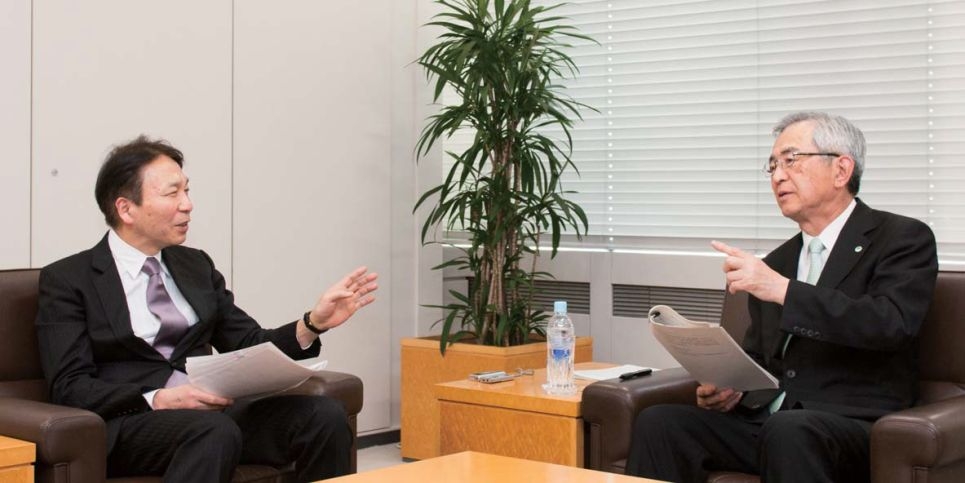
Kawamura: Of all the developing countries, what is your view of the future growth of China’s economy? In the past there was talk of China catching up with the United States in terms of “quantity” at least.
Iwata: In terms of scale, there are many predictions that China will surpass the United States in the beginning of the 2030s. I believe China itself believes this, and based on this premise of overtaking the United States and becoming the world’s No.1 superpower, is formulating its foreign policy and other plans. However, in 2050 projections made by the Japan Center for Economic Research, the outlook is slightly different. The fact is that not many developing countries make an uninterrupted, smooth transition into advanced countries. In South America, in particular there were several countries with high growth rates but in the end never reached the level of advanced countries. We refer to this phenomenon as the “middle-income trap.
” For example, during the stage when a developing country is catching up with advanced countries, it is relatively easy to catch up technologically through direct investment and licensing of technology. During Japan’ s period of high economic growth too, the country was in a similar situation. At the catching up stage, the economic growth rate is high and everything moves smoothly. Once the country nears the catch-up point, however, it needs proprietary technologies. Unless the country makes a significant leap forward by independently developing its own technologies, it will not be able to maintain economic growth. Asia’ s so-called NIEs*2 – Korea, Taiwan, Singapore and Hong Kong – are the only countries in Asia that were capable of escaping the middle-income trap.
Other countries have not been so fortunate in escaping from the middle-income trap yet. A “middle-income country” according to the World Bank’ s classification is a country with per capita gross national income of up to $12,000. In 2050 projections by the Japan Center for Economic Research predicts, the per capita gross national income in China as of 2050 is forecast to remain at the level of $12,000. At the moment, it is at $6,000 and is set to double in amount in the future. In other words, thecountry wi ll remain a middle- income country. Therefore, we predict that China will not be able to escape the middle-income trap. Furthermore, in terms of politics, we believe that China is facing its third crisis of the postwar era. The first was the Cultural Revolution, and the second was the Tiananmen Square Incident. While China enjoyed high economic growth dur ing thi s per iod, the development of democracy was inhibited, and I believe that this anomaly is again coming to the fore.
Kawamura: I guess democracy was sacrificed to protect the one-party rule.
Iwata: It would have been preferable if China could have moved somewhat more in the direction of promoting democratization. Today, the problem of corruption is becoming serious, and “shadow banking” is closely related to this problem. Local governments are unable to issue their own local bonds, and they create organizations for financing within the state-owned businesses and local gove rnments, and such organizations collect money that is used without disclosure in “the shadows.” Because these are not official funds, the interestrates are very high, resulting in a very unstable mechanism. The impact of the purging of Bo Xilai on corruption charges may have a significant impact on China’s political system. Just recently, there was an article in the Financial Times referring to Jian Zemin, former President of the People’ s Republic of China, who commented that the actions of Xi Jinping, President of the People’s Republic of China, amounted to “overkill,” and confrontations between politicians are getting extremely serious. In this context, we can say that China right now is facing a political crisis. Because political system reforms are lagging so much, I believe China is in a situation where it cannot yet break free of the middle-income trap.
Kawamura: In China, there are still many state-owned businesses, and there is some uneasiness about utilizing private sector companies.
Iwata: If China is serious about carrying out economic reforms, privatization of state-owned businesses will be essential. However, President Xi Jinping is avoiding this.
Kawamura: Now I would like to ask some personal questions, Mr. Iwata. I understand how you have honed your skills through your work in the area of economics. I am wondering if you also pursue other activities in your private life for honing your skills, such as an activity for self-fulfillment, something that you might see as self-investment. If so, can you please tell us about it?
Iwata: This question is also a philosophical matter and this is most difficult for me to answer. Essentially, I am interested in learning. The subject of my learning varies but at the moment, I feel that my work at the Japan Center for Economic Research itself represents learning for me. In the Analects of Confucius, there is a saying that goes, “To merely know is nothing compared to being interested to know; being interested to know is nothing compared to deriving joy from learning.” This means, “They who know to learn are not superior to those who love it, and they who love it are not superior to those who delight in it.” I also agree with this. When we truly love our work, love to study, and delight in its pursuit, that in some sense is a self-investment, and I believe that this is the best way for self-fulfillment.
Kawamura: So you have more or less reached the stage where your work itself is your enjoyment at present?
Iwata: Due to the nature of my work it may not necessarily be so all the time, but I really enjoy basic study and analysis of economics.
Kawamura: You mentioned earlier that you changed workplaces six times to date. When you changed workplaces, was it your aspiration to find a more suitable or a more enjoyable workplace?
Iwata: I am not so sure. When I returned to the University of Tokyo, my alma mater, from the Economic Planning Agency, I remember feeling relieved to get away from the government office and so I must have felt happy.When I was asked to return to the Cabinet Office again, I was not quite inclined to do so, but once I did return, to my surpr i se I found the work qui te interesting. It was during the Koizumi reforms, and it was a period when we all felt that perhaps Japan would change. My position after that as Deputy Governor of the Bank of Japan was also very challenging, and it was a very meaningful workplace for me in the sense that I felt I needed to do something about Japan’s suffering from persistent deflation.
Kawamura: Like Hitachi, as with many companies in the past, many people remained at the same company until their retirement and, in some cases, continued the same line of work, but I believe we will see an increasing trend in people changing jobs.
Iwata: I believe, perhaps, the fluidity of jobs will also increase.
Kawamura: Right now, even within the company, personnel transfers are increasing considerably. When work in one area is terminated, the company retrains personnel and reassigns them to other workplaces. By all rights, Ibelieve it would be better if we are able to circulate personnel in Japan as a whole from mature industries to growing industries. In this way, working people themselves can enjoy their work and come closer to achieving self fulfillment.
Iwata: Exactly.
Kawamura: Mr. Iwata, if you have a motto, can you please tell us about it?
Iwata: Right now, I run a serial column on various issues once a month under the title Banri Ikku on the website of the Japan Center for Economic Research. This Banri Ikku is a term in the 35th article of the manual ofswordsmanship entitled “The 3 5 Articles of Swordsmanship” and written by Miyamoto Musashi for Lord Hosokawa. Each article in this manual gives detailed explanations of swordsmanship but there is no proper explanation of the phrase banri ikku except for a single sentence with the gist that banri ikku is something that “cannot be described in words” and its meaning must be considered entirely by the individual.
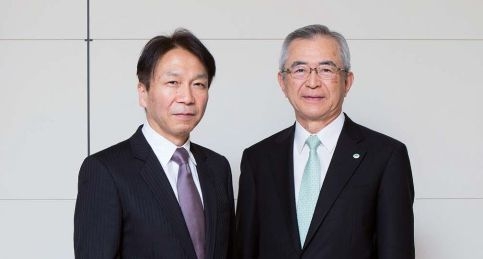
There may be many interpretations of this term but I believe it is meant to lead us to the realization that ultimately there is only “emptiness.” For example, if you are pitted against your opponent, it is too late to start thinking of various strategies. You must keep your mind empty. Essentially, I think it is a word for expressing such a psychological state. People in ancient times often used poetry as a medium for expressing their frame of mind. I feel very moved by the words of Miyamoto Musashi’ s poetry, such as “When I see the universe as if it were in a garden, then I myself live outside of heaven and earth.” In these poems, I believe perhaps Miyamoto Musashi was referring to banri ikku. This 31-syllable Japanese poem is also prefaced with the following words: “With the spirit of the emptiness bundling the earth, including the mountains and waters, the whole world is set in a
state of mind clear of indecision or complexity.(Ten thousand reasons boil down to the emptiness.)” I interpreted the preface in this way:
“When I pit myself against my opponent, I see myself from another invisible world. There is such another universe where I pit myself against my opponent.” Miyamoto Musashi’s school was “Niten Ichi Ryu” ( “Two Heavens as One” ). There are some who insist that this actually means “Two Heavens in One,” because Miyamoto Musashi was a two-sword fencer. However, my understanding differs and I believe the meaning is closer to the poem that goes: “There is a universe that we see ordinarily and there is another universe. We need to live our life with the self-awakening that we live in both of these two universes. When we pit ourselves against our opponents, we must proceed in that mental state.” I believe banri ikku expresses this mental state in a single phrase. This happens to be my motto.
Kawamura: This is my first time to hear the phrase banri ikku. And this is going to be my last question. Do you do anything as way of re-energizing yourself or as a pastime?
Iwata: For almost 40 years I have been practicing the ancient Japanese martial art of Tenshin Shoden Katori Shinto-ryu. This is a school of swordsmanship founded by Iizasa Choi-sai Ienao during the mid Muromachi Period. The main dojo is located at Katori Shrine, and I visit there from time to time.
Kawamura: So, you have continued your practice of swordsmanship over the years.
Iwata: Yes, I really enjoy it. The Tenshin Shoden Katori Shinto-ryu has 650 years of history, and what is interesting is that many foreigners are very interested in it. At the dojo in Kawasaki where I go frequently, while there are only 30 to 40 Japanese disciples, the number of foreign disciples rarely falls below 1,000. Many Europeans visit the dojo, including French, German, Belgian, and Italian. This is a very traditional form of swordsmanship, and foreigners seem to be more attracted to the culture and tradition of this school than young Japanese.
Kawamura: Mr. Iwata, I would like to thank you very much for participating in this interview today despite your very busy schedule.
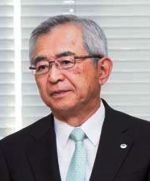
Mr. Iwata successively held key posts in areas of economics and public finance in Japan including Director-General for Policy Planning at the, Cabinet Office , and Deputy Governor at the, Bank of Japan. At present, he is providing policy proposals for Japan’ s economic recovery from his position as President of the Japan Center for Economic Research. During this interview, I asked Mr. Iwata to comment on a wide range of topics including prospects for Japan’ s economy to break free of its persistent deflation, system reforms including the TPP as a key feature of these reforms, the future of the economies of the United States and China, and the development of new industries in the “Second Machine Age,” and I believe that during the interview we had a thoroughly enjoyable discussion. As Japan’ s population continues to shrink, Mr. Iwata stressed that if Japan is to maintain its population at a certain level, which is a prerequisite for economic growth, the need for careful consideration of various factors and affirmative action is essential not only on the part of the country and the government but also on the part of the private sector and individual citizens in Japan, particularly in regard to issues such as the declining population and immigration. During the interview, I feel that Mr. Iwata touched upon a number of issues that are also important for the Hitachi Group as we endeavor to promote more employment opportunities for women and diversity. I was also deeply inspired by Mr. Iwata’ s approach to work as a means to achieving self-fulfillment.